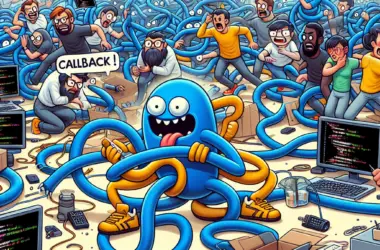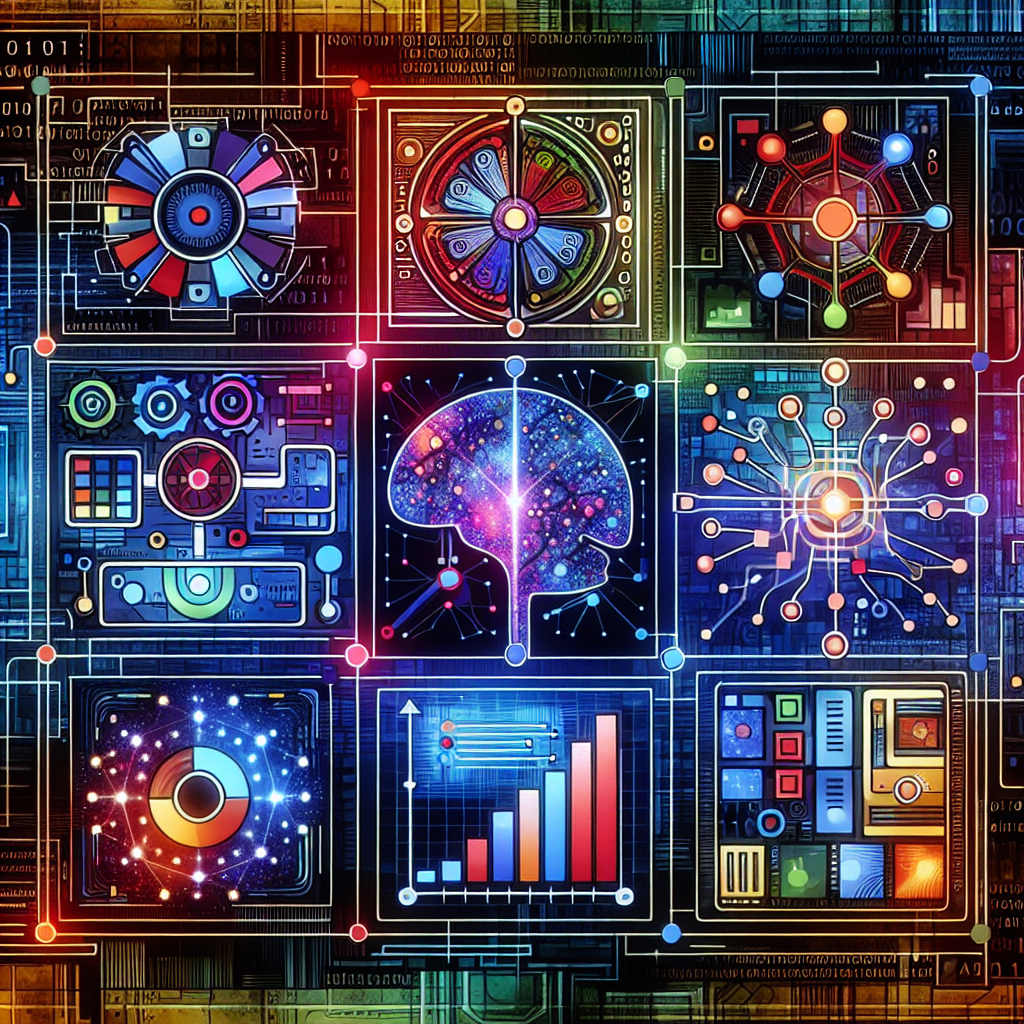Introduction
In the rapidly evolving landscape of artificial intelligence, generative models have emerged as a groundbreaking technology, capable of creating content that ranges from text and images to music and beyond. Open-source generative AI models, in particular, have democratized access to these advanced capabilities, allowing researchers, developers, and enthusiasts to experiment, innovate, and contribute to the field. This article delves into the top 7 must-know open-source generative AI models that are making significant waves in the AI community. These models not only showcase the cutting-edge advancements in generative AI but also highlight the collaborative spirit of the open-source movement, driving forward the possibilities of what AI can achieve. From text generation to image synthesis, these models represent the pinnacle of current AI research and development, offering powerful tools for a wide array of applications.
Overview Of The Top 7 Must-Know Open-Source Generative AI Models
Generative AI models have revolutionized the field of artificial intelligence, enabling machines to create content that is indistinguishable from human-generated output. Among the plethora of models available, seven open-source generative AI models stand out due to their capabilities, versatility, and impact on various applications. These models have been developed by leading research institutions and companies, and they offer a range of functionalities from text generation to image synthesis.
Firstly, GPT-3 by OpenAI is one of the most advanced language models available today. With 175 billion parameters, it can generate human-like text based on a given prompt. Its applications are vast, including content creation, translation, and even coding assistance. Despite its proprietary nature, OpenAI has released an API that allows developers to integrate GPT-3 into their applications, making it accessible to a broader audience.
Transitioning to another significant model, BERT (Bidirectional Encoder Representations from Transformers) by Google has made substantial contributions to natural language understanding. Unlike traditional models that read text sequentially, BERT processes words in both directions, capturing context more effectively. This bidirectional approach has improved performance in tasks such as question answering and sentiment analysis. BERT’s open-source nature has enabled researchers and developers to fine-tune it for specific applications, further enhancing its utility.
In the realm of image generation, DALL-E, also developed by OpenAI, has garnered attention for its ability to create images from textual descriptions. By leveraging a variant of the GPT-3 model, DALL-E can generate highly detailed and imaginative images that align with the provided text. This capability opens up new possibilities in fields such as design, advertising, and entertainment, where visual content is paramount.
Moving on to another noteworthy model, StyleGAN by NVIDIA has set new standards in the generation of high-quality images. StyleGAN’s architecture allows for unprecedented control over the style and features of generated images, making it a powerful tool for artists and designers. Its open-source release has spurred a wave of innovation, with researchers building upon its framework to create even more sophisticated models.
In the domain of music generation, OpenAI’s MuseNet stands out for its ability to compose music in various styles and genres. By training on a diverse dataset of musical compositions, MuseNet can generate complex and coherent pieces that mimic the style of renowned composers. This model has significant implications for the music industry, offering new avenues for creativity and collaboration.
Another essential model is T5 (Text-To-Text Transfer Transformer) by Google, which treats all NLP tasks as a text-to-text problem. This unified approach simplifies the process of training and fine-tuning models for different tasks, making T5 a versatile tool for developers. Its open-source availability has facilitated widespread adoption and adaptation for various applications, from translation to summarization.
Lastly, the CLIP (Contrastive Language-Image Pre-Training) model by OpenAI bridges the gap between text and image understanding. By training on a vast dataset of images and their corresponding captions, CLIP can perform tasks such as image classification and zero-shot learning with remarkable accuracy. Its ability to understand and generate content across different modalities makes it a valuable asset in the development of more integrated AI systems.
In conclusion, these seven open-source generative AI models represent the cutting edge of artificial intelligence research and development. Their diverse capabilities and open-source nature have democratized access to advanced AI technologies, enabling a wide range of applications across various industries. As these models continue to evolve, they will undoubtedly play a crucial role in shaping the future of AI-driven innovation.
Applications And Use Cases Of The Top 7 Must-Know Open-Source Generative AI Models

Open-source generative AI models have revolutionized various industries by providing innovative solutions and enhancing productivity. These models, which are freely available for modification and distribution, have a wide range of applications and use cases. Understanding the potential of these top seven must-know open-source generative AI models can offer valuable insights into their practical applications.
Starting with GPT-3, developed by OpenAI, this model has set a new standard in natural language processing. Its ability to generate human-like text has found applications in content creation, customer service, and even coding assistance. For instance, businesses use GPT-3 to automate customer support, providing instant and accurate responses to common queries. Additionally, content creators leverage its capabilities to draft articles, social media posts, and marketing materials, significantly reducing the time and effort required.
Moving on to DALL-E, another groundbreaking model from OpenAI, it specializes in generating images from textual descriptions. This model has immense potential in the fields of design and advertising. Graphic designers can use DALL-E to quickly create visual concepts based on client briefs, while advertisers can generate unique and engaging visuals for their campaigns. Moreover, DALL-E’s ability to produce high-quality images from simple text inputs makes it a valuable tool for prototyping and brainstorming sessions.
Similarly, StyleGAN, developed by NVIDIA, has made significant strides in the realm of image generation. This model is particularly renowned for its ability to create highly realistic human faces, which has numerous applications in entertainment and media. For example, filmmakers and game developers can use StyleGAN to generate lifelike characters, saving time and resources in the production process. Additionally, StyleGAN’s capabilities extend to fashion and e-commerce, where it can create virtual models to showcase clothing and accessories.
In the domain of music, OpenAI’s MuseNet stands out as a versatile generative AI model. MuseNet can compose music in various styles and genres, making it a valuable tool for musicians and composers. It can assist in generating new melodies, harmonies, and even full compositions, providing inspiration and aiding in the creative process. Furthermore, MuseNet’s ability to blend different musical styles opens up new possibilities for innovative and experimental music production.
Transitioning to the field of video generation, DeepMind’s AlphaFold has made a significant impact. Although primarily known for its protein folding predictions, AlphaFold’s underlying technology has potential applications in video generation and animation. By understanding the complex structures and movements of proteins, similar techniques can be applied to generate realistic animations of biological processes, which can be invaluable in educational and scientific visualizations.
Another noteworthy model is OpenAI’s Codex, which powers GitHub Copilot. Codex is designed to assist programmers by generating code snippets and offering suggestions based on natural language inputs. This model has proven to be a game-changer in software development, as it can significantly speed up the coding process and reduce the likelihood of errors. Developers can rely on Codex to handle repetitive coding tasks, allowing them to focus on more complex and creative aspects of their projects.
Lastly, Google’s BERT (Bidirectional Encoder Representations from Transformers) has transformed the field of natural language understanding. BERT’s ability to grasp the context of words in a sentence has made it indispensable for tasks such as sentiment analysis, language translation, and information retrieval. Businesses use BERT to analyze customer feedback, translate content for global audiences, and improve search engine algorithms, thereby enhancing user experience and decision-making processes.
In conclusion, these top seven open-source generative AI models have demonstrated their versatility and potential across various industries. From natural language processing and image generation to music composition and software development, these models are driving innovation and efficiency. As technology continues to advance, the applications and use cases of these generative AI models are likely to expand, offering even more opportunities for creative and practical solutions.
Comparison And Performance Analysis Of The Top 7 Must-Know Open-Source Generative AI Models
In the rapidly evolving field of artificial intelligence, generative models have emerged as a cornerstone of innovation, enabling machines to create content that is indistinguishable from human-generated data. Among these, open-source generative AI models have gained significant traction due to their accessibility and collaborative development. This article delves into a comparison and performance analysis of the top seven must-know open-source generative AI models, providing insights into their unique features and capabilities.
Starting with GPT-3, developed by OpenAI, this model has set a high benchmark in natural language processing. With 175 billion parameters, GPT-3 excels in generating coherent and contextually relevant text. Its versatility spans various applications, from chatbots to content creation. However, its substantial computational requirements and potential for generating biased content are notable drawbacks. Transitioning to another prominent model, BERT, also from OpenAI, focuses on bidirectional training, which allows it to understand the context of a word based on its surrounding words. This makes BERT particularly effective for tasks like question answering and language inference. Despite its impressive performance, BERT’s training complexity and resource demands can be challenging for smaller organizations.
In contrast, T5 (Text-to-Text Transfer Transformer) by Google adopts a unified text-to-text framework, converting all tasks into a text generation problem. This simplification enhances its adaptability across diverse NLP tasks. T5’s performance is commendable, especially in translation and summarization tasks. However, its extensive pre-training phase necessitates significant computational power. Moving on, the Transformer-XL model addresses the limitation of fixed-length context in traditional transformers. By introducing a segment-level recurrence mechanism, Transformer-XL can capture longer-term dependencies, making it suitable for tasks requiring extended context understanding. Nevertheless, its implementation complexity can be a barrier for some users.
Another noteworthy model is the DALL-E, also from OpenAI, which generates images from textual descriptions. This model has revolutionized the field of generative art and design, showcasing the potential of AI in creative domains. While DALL-E’s outputs are often impressive, the model’s training data and computational requirements are substantial, posing challenges for widespread adoption. Similarly, StyleGAN, developed by NVIDIA, has made significant strides in image generation. By leveraging generative adversarial networks (GANs), StyleGAN produces high-quality, photorealistic images. Its applications range from entertainment to fashion design. However, the model’s susceptibility to generating artifacts and its intensive training process are areas of concern.
Lastly, the VQ-VAE-2 (Vector Quantized Variational AutoEncoder 2) by DeepMind offers a unique approach to image generation by combining variational autoencoders with vector quantization. This model excels in generating high-fidelity images with diverse styles. Its hierarchical structure allows for efficient training and scalability. Despite these advantages, VQ-VAE-2’s complexity and the need for extensive hyperparameter tuning can be daunting for practitioners.
In conclusion, the landscape of open-source generative AI models is rich with innovation and potential. Each model discussed here brings distinct strengths and challenges, catering to various applications and user needs. While GPT-3 and BERT dominate in natural language processing, models like DALL-E and StyleGAN push the boundaries of image generation. T5’s unified framework and Transformer-XL’s extended context understanding offer unique advantages, while VQ-VAE-2’s hierarchical approach provides a fresh perspective on image synthesis. As the field continues to advance, these models will undoubtedly play a pivotal role in shaping the future of AI-driven creativity and problem-solving.
Q&A
1. **What is GPT-3?**
GPT-3 (Generative Pre-trained Transformer 3) is an advanced language model developed by OpenAI that can generate human-like text based on the input it receives.
2. **What is DALL-E?**
DALL-E is an AI model developed by OpenAI that generates images from textual descriptions, combining concepts, attributes, and styles in novel ways.
3. **What is StyleGAN?**
StyleGAN is a generative adversarial network (GAN) developed by NVIDIA that can generate high-quality, realistic images, often used for creating synthetic faces and other complex visuals.In conclusion, the top 7 must-know open-source generative AI models—GPT-3, DALL-E, StyleGAN, BERT, T5, VQ-VAE-2, and OpenAI Codex—represent significant advancements in natural language processing, image generation, and code synthesis. These models have democratized access to powerful AI tools, enabling a wide range of applications from creative content generation to complex problem-solving. Their open-source nature fosters innovation, collaboration, and accessibility, driving forward the capabilities and understanding of generative AI across various domains.


